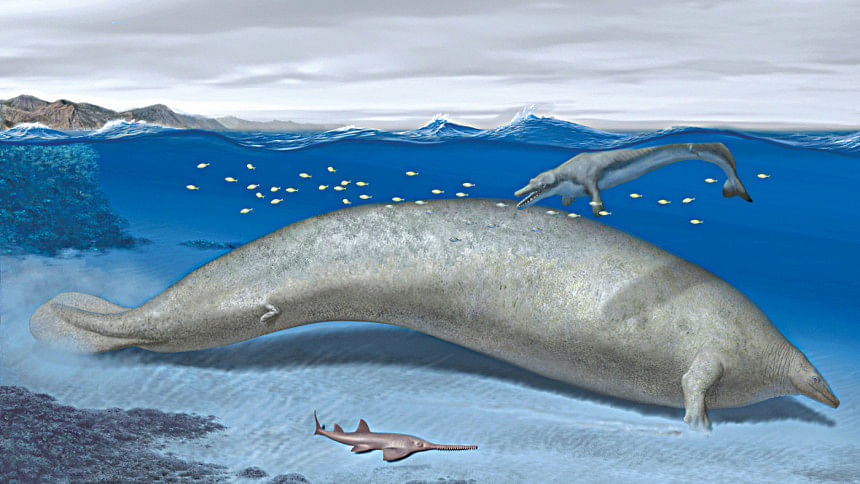Massive ancient whale fossil discovered in Peru

A newly discovered whale that lived nearly 40 million years ago could be the heaviest animal to have ever lived, based on a partial skeleton found in Peru, scientists said on Wednesday.
The modern blue whale has long been considered the largest and heaviest animal ever, beating out all the giant dinosaurs of the distant past.
But Perucetus colossus -- the colossal whale from Peru -- may have been even heavier, according to a study published in the journal Nature.
Extrapolating from some massive bones found in the Peruvian desert, an international team of researchers estimated that the animal had an average body mass of 180 tonnes.
That would not take the heavyweight title by itself. The biggest blue whale ever recorded weighed 190 tonnes, according to Guinness World Records.
But the researchers estimated the ancient whale's weight range was between 85 and 340 tonnes, meaning it could have been significantly larger.
The first fossil of the ancient whale was discovered back in 2010 by Mario Urbina, a palaeontologist who has spent decades searching the desert on the southern coast of Peru.
"There is no record of the existence of an animal as large as this, it is the first, that's why nobody believed me when we discovered it," Urbina told AFP in Lima.
According to the researcher, this discovery "is going to cause more questions than answers and give the rest of the palaeontologists a lot to talk about."
The remains were presented to the public for the first time during a press conference at the Natural History Museum in the Peruvian capital, where they are being displayed.
The researchers estimate that the animal reached about 20 metres (65 feet) in length.
The researchers were careful not to declare the ancient whale had broken the record.
But there was also "no reason to think that this specimen was the largest of its kind," study co-author Eli Amson told AFP.
"I think there's a good chance that some of the individuals broke the record -- but the take-home message is that we are in the ballpark of the blue whale," said Amson, a palaeontologist at the State Museum of Natural History Stuttgart in Germany.

 For all latest news, follow The Daily Star's Google News channel.
For all latest news, follow The Daily Star's Google News channel. 



Comments